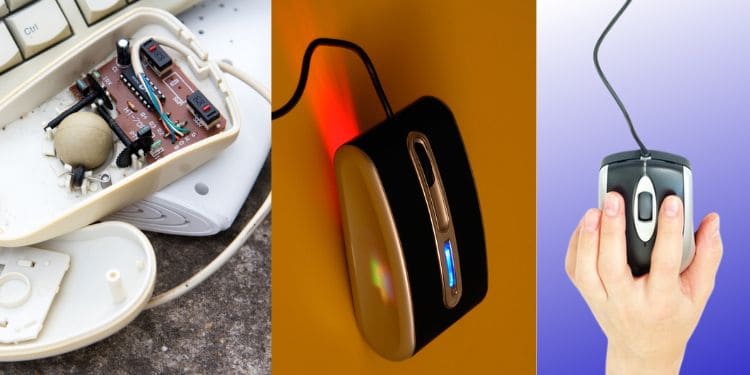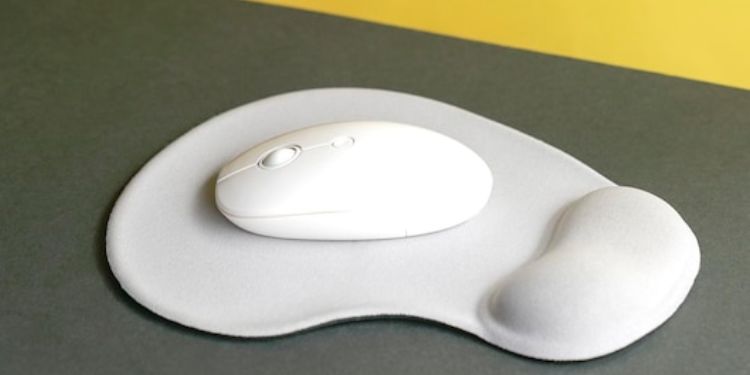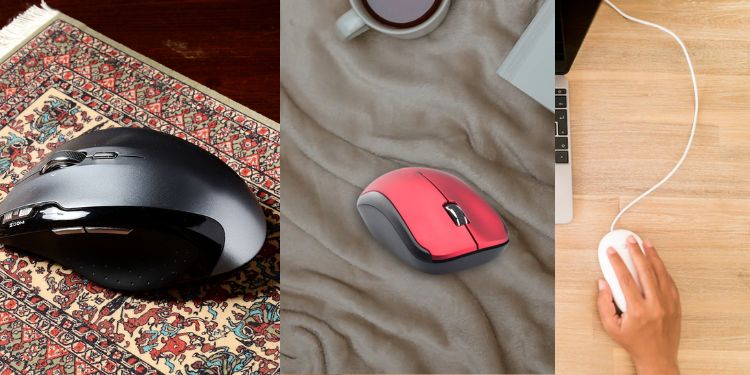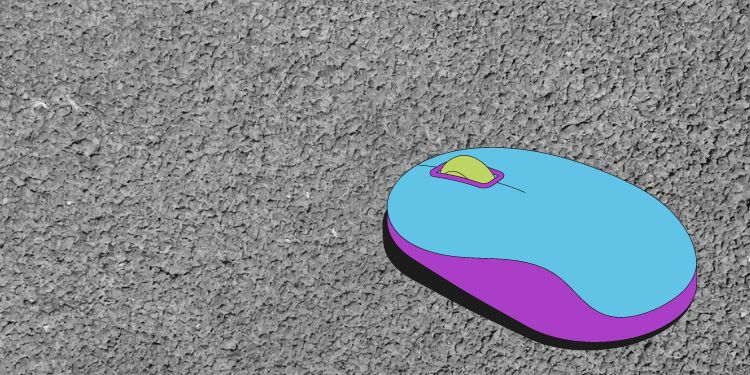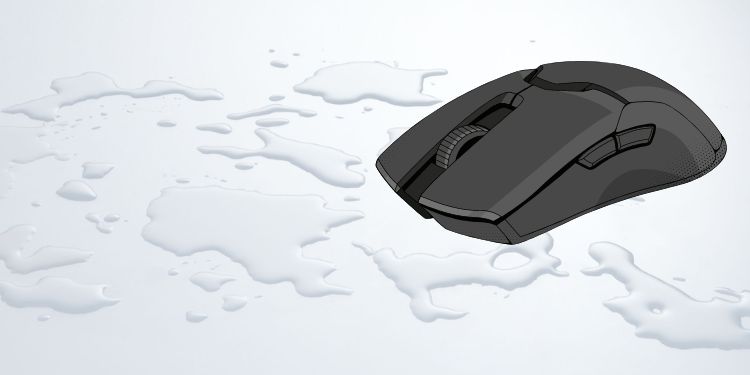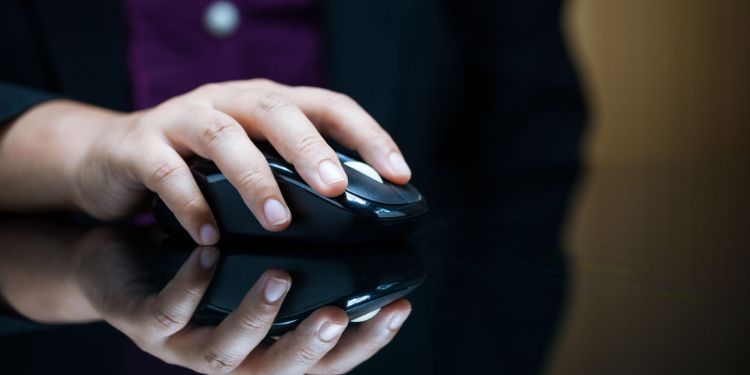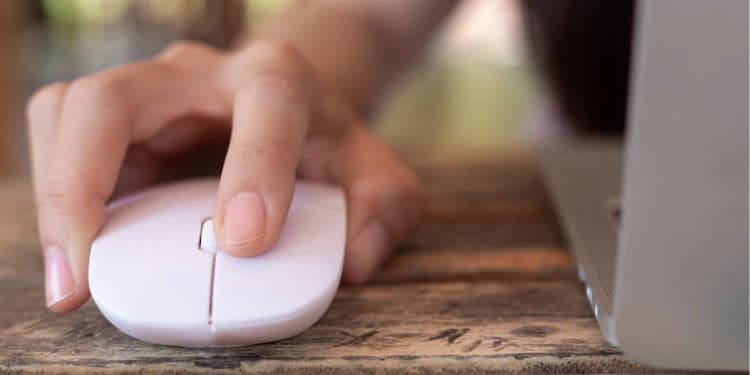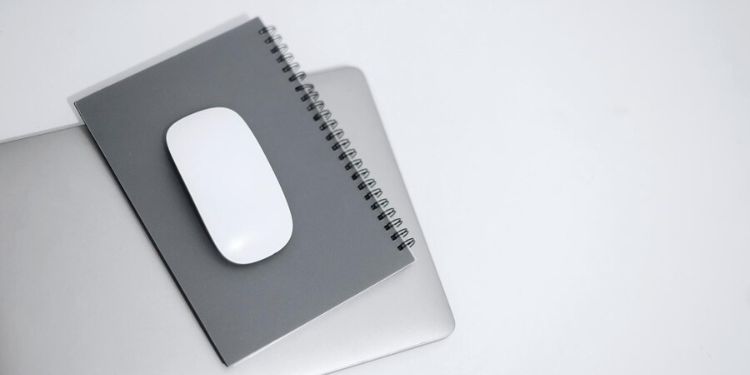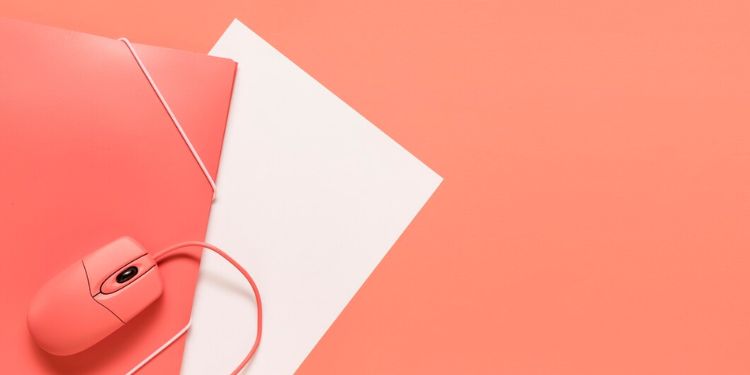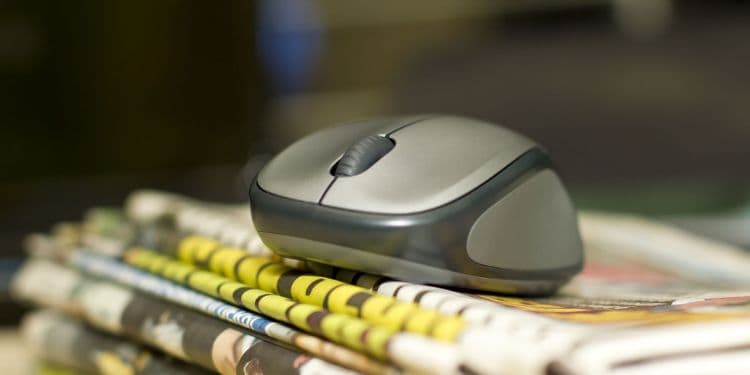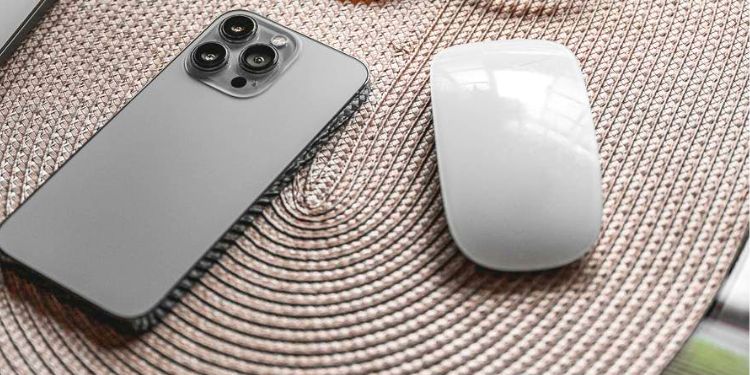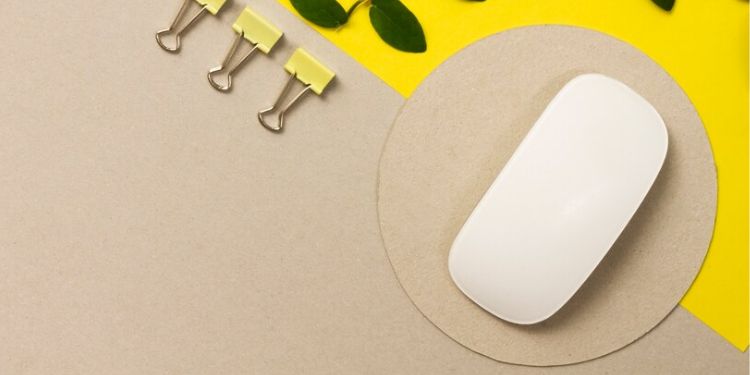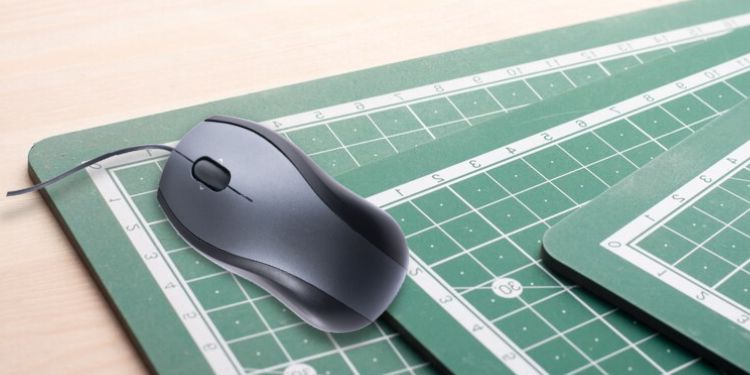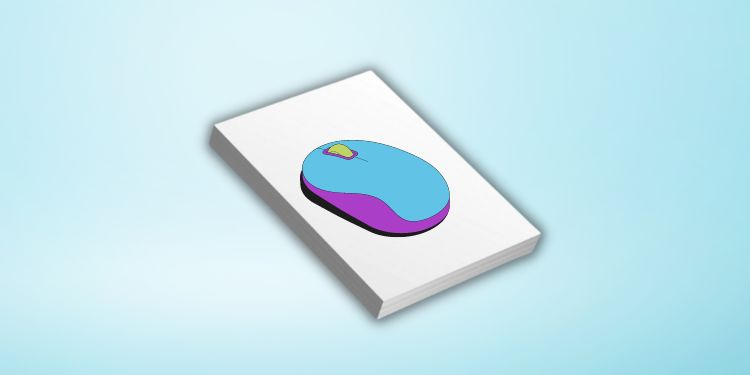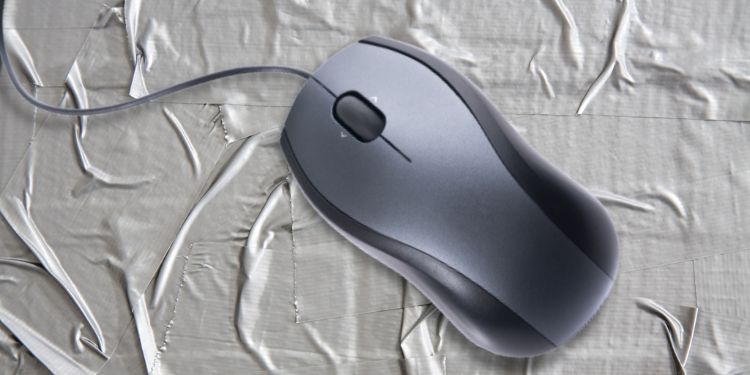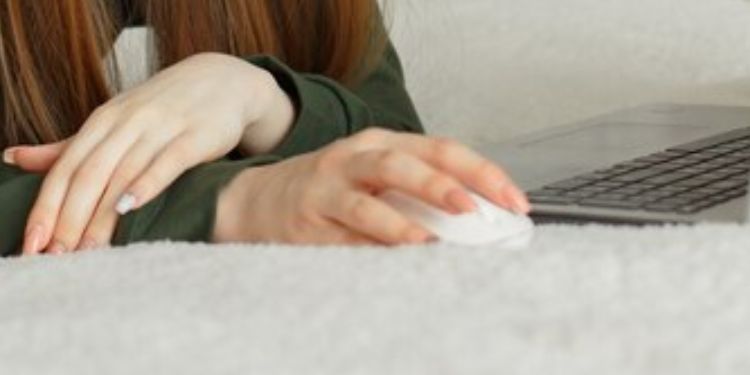However, the mouse industry has changed quite a bit as some manufacturers have started offering mice that can be used on any surface. So, most of us do not tend to extend our budget for a good mouse pad as there are plenty of alternatives.Generally, using a mouse on any flat and non-glossy surface is considered good. Nonetheless, there are plenty of things to consider before using some other tools as a mouse pad alternative.
Should You Use Mouse Without a Mousepad?
Some premium mouse pads are made of high-quality materials, like wood, leather, vynex, rubber, and fabric. So, it’s obvious that they make your mouse movement more comfortable and even slightly enhance your gaming performance.However, if you are not opting for these products and looking for a cheaper option, you can get a regular mouspad. But cheaper mouse pads has an expiration date and can deteriorate quickly. On top of that, it might get dirty and need a regular cleaning. And even though mouse pads have a significant difference on your movements, you can go for an alternative. These alternatives can be a temporary option before you settle on a brand.
Things to Consider Before Getting a Mouse Pad
So, if you’re looking for a mouse pad alternative, you need to use suitable tools to help you in gaming and work. Also, we highly discourage using your input device on any surfaces you like. In this section, we will discuss the important things you need to consider before getting an alternative mouse pad.
Type of Mouse
Firstly, you need to know what type of mouse you’re using. As we stated earlier, some manufacturers offer mice suitable for all surfaces. However, most users still depend on the old-fashioned mice that need proper care and management.Basically, we can categorize mice into three types based on their manufacture and design – mechanical, optical, and laser.Well, mechanical mice have a rubber ball on the bottom surface that helps detect movement. So, if you possess a mechanical mouse, it’s best to use them on a flat surface for smooth movement. An advantage is that you can use them on proper glass surfaces.On the other hand, optical mice use LEDs to project images for controlling movement. So, for these types, you should avoid using them on glass surfaces, like a mirror. Nonetheless, you can use them on any rough surface having irregularities, like a wooden desk.Lastly, a laser mouse uses laser beams to illuminate surfaces. Unlike optical mice, they can be used on proper glasses but suffer jittery movement on rough surfaces. Here’s a complete guide to help you differentiate between an optical and laser mouse.
Size of the Alternative Mouse Pad
Today’s mouse pads come in different sizes. Well, you can get a regular-sized mat for general purposes and ultra-large mats that can fit your entire desk.So, if you’re looking for an alternative mouse pad just to place and move your mouse, you can use regular-sized cardboards, books, or paper. This is best when you’re using the device for general purposes.However, preparing a bigger DIY mouse pad lets you drag the peripheral to a greater extent. This is best used when gaming and designing.
Aesthetic and Feel
These days, several mouse pads provide features like wireless charging and RGB lighting. Indeed, they add aesthetics to your desktop setup.So, if you want a beautified setup that reflects your personality, we suggest using attractive tools as your mouse pad alternatives. For example, using a piece of old cloth or paper for your expensive gaming mouse won’t do good.Similarly, mouse pads enhance the way you use a mouse, especially when gaming. Indeed, there’s a vast difference in how you feel when using the device on a table and while using a mousepad.Thus, you need to find some good tools that don’t just add beauty but also make you feel better when dragging your mouse around.
Ergonomics
Ergonomics plays an important role in improving your comfort and productivity. So, most manufacturers offer an ergonomic mouse pad that helps you rest your wrist when using a mouse.So, if you’re someone who works for long hours, it’s important you consider resting your wrist from time to time. Hence, we recommend making a DIY wrist rest that adds comfort while using a mouse.
Type of Material
The final thing to consider is the material for your alternative mouse pad. Generally, soft mouse pads are made of good quality fabrics, while the hard ones are made of aluminum. Choosing the right material is important. If you’re a hardcore gamer, it’s best to use harder surfaces like a wooden desk, cardboards, or book covers. They lack friction that lets you move your mouse faster. Nonetheless, you can also use soft materials like paper or cloth that improve pointing accuracy.
Best Surfaces for Mouse
Before placing your mouse somewhere, it’s important to know the right surface. Basically, keeping your mouse on suitable surfaces helps protect the mouse from any wear and tear. Below are some of the best surfaces for your mouse to get swift movements.
Non-glossy Surfaces
Glossy surfaces produce specular reflection giving the object a mirror-like appearance. Tiles, marbles, gloss photo papers, etc., are some of its examples.On such surfaces, most optical mice can’t track the movements properly. Thus, we recommend avoiding glossy surfaces. Instead, you can use your mouse on non-glossy surfaces, like uncoated and matte papers.
Silicon and Fabric Surfaces
Any clothing products made of silicon are ideal to use as a mouse pad alternative. This is because silicon is comfortable and provides easy navigation. In fact, most mousepads these days are made of silicon and fabric products. Unlike glossy surfaces, silicon-based materials have a little roughness, which allows optical mice to detect movements easily. However, these surfaces may not be applicable if you plan to play games regularly. Instead, the softness provides you with smoothness and comfort.
Wooden Surfaces
When using non-glossy and silicon surfaces, you might experience a slight decrease in your mouse performance. However, that’s not the case with wooden surfaces.In fact, many manufacturers have introduced wooden mousepads to improve aesthetics and feel better while using a mouse. Moreover, several users prepare their own DIY wooden mousepads.
Surfaces You Need to Avoid
Basically, you can use a mouse on any surface, considering a little roughness but no glossiness. Although your cursor movement works fine on most surfaces, we highly discourage you from using your mouse on the below ones. This won’t just degrade your mouse’s performance but may also decrease its lifespan.
Bumpy or Uneven Surfaces
Whether using a mechanical, optical, or laser mouse, it becomes difficult for you to drag around on bumpy surfaces. For example, if you’re on a wooden surface and your desk isn’t even, you may notice that the cursor on your screen doesn’t work the way it should.Moreover, a laser mouse becomes slow and laggy when used on an uneven surface. This is because they need smoother surfaces with little rough spots to mark how and where the pointer should point on the screen.Furthermore, continuously dragging your mouse on bumps may damage the bottom part of your mouse. Thus, this has a probability that a mouse can stop working completely in the near future.
Wet Surfaces
Indeed, it is silly to even include that wet surfaces shouldn’t be used as your mouse pad alternatives. Even little drops of water can impact your mouse movement negatively.Well, a few drops of water are protected by the plastic covers to enter inside your device. However, if you continuously use your mouse on completely wet surfaces, the peripheral can get damaged soon.
Reflective Surfaces
Optical mice work by recognizing light patterns when LED projects lights on the reflective surface. They reportedly have CMOS sensors attached at the bottom for this job, which is also how a wireless mouse works.Thus, we recommend not to use mirrors or any other reflective items as a mousepad. Instead, there are several other alternatives that we will discuss in the next section.
What are the Best Mouse Pad Alternatives?
Although mouse pads are the preferred tools for maintaining sensitivity and improving pointing accuracy, you may have several reasons to use their alternative. If you’re out of your home or out of budget, there’s no need to worry. In this section, we’ve provided you with the ten best mouse pad alternatives.
Wooden Desks
If you have a wooden desk with an even surface, you do not need to get a mouse pad at all. In fact, you can get exceptional ergonomic PC desks available in the market these days.However, we suggest avoiding wooden desks with excessive bumps on them. Moreover, these surfaces can contain excessive dust that might get stuck under your mouse. So, we recommend cleaning your mouse and desk regularly.Also, after cleaning your wooden desk with water, you may be left with a wet surface. In such a case, you need to wait for it to dry before placing your mouse on the desk.
Hard Book or Notebook Covers
Books have always been our friends when trying to cool laptop fans or raise a monitor height. Similarly, the hard book covers can be an outstanding alternative to a mouse pad.Indeed, hard book covers have no glossy surface but have exactly the needed amount of roughness for an optical mouse to function well. Well, you can place an entire book or simply tear the hard book cover out and start using it as your DIY mousepad.
Hard Files or Folders
If you’re a student or an office employee, you likely have a hard file or folder. By a folder, we do not mean a clear bag as they have smoother surfaces, making it hard to move a mouse.Nonetheless, a hard or spongy file is best in terms of size, shape, and roughness. So, it can definitely be another best alternative to mouse pads.
Magazines
Like book covers, magazines are also an ideal choice. If you are in a hotel and trying to use your mouse, you will likely find one.Just like the book covers, their even surface can improve your mouse DPI and pointing accuracy. However, this isn’t as best as using the hard book covers as you may not find magazines useful while gaming.
Placemats
Surprisingly, the kitchen placemats can also be used as a mouse pad. In fact, these look like one of the old mouse pads we used in the past.Generally, there are two types of dining table mats – a smaller one for placing cups and a larger one for placing plates. We recommend using the latter one as they assist you in moving around the mouse to a larger extent.
Cardboards
Using wooden or corrugated cardboard is also an ideal option. In fact, you can even color them and add aesthetics to your desktop setup.Well, if you have old cardboard boxes available at home, you can simply cut off one of the sides. Then, you can make it shorter or to a size you prefer.
Self-healing Cutting Mat
Generally, we use a self-healing cutting mast to place them below when cutting certain materials. So, it’s pretty obvious that they are durable and have a good surface to move around a mouse.Furthermore, these are way cheaper than mouse pads. Thus, the self-healing cutting mat should be applicable if you have a low budget.
Multiple Pieces of Paper
Using paper is the cheapest alternative to a mouse pad. Interestingly, you can tear off pages from a book or notebook or even use A4 papers.Indeed, you can use a single piece of paper, but that might tear soon and get wet if you have a sweaty hand. So, it’s better to make a thicket base using multiple pages.Another problem with paper is that they aren’t static and can create mouse sensitivity problems. Moreover, some users also reported that the papers got stuck with the mouse while lifting it up.So, you can tape all the edges of a paper to your desk so that they do not move when using your mouse. Also, you can use bond paper, wax paper, or newspapers to create a larger DIY mouse pad.
Duct Tapes
Duct tapes are durable tapes generally used for repairing tools. However, this can be another alternative to your mouse pad. Indeed, you can create a DIY mat using duct tape. All you have to do is tape your desk horizontally or vertically with four or five stripes. Continue placing tapes above them and make them a bit thicker. Now, you can place your mouse and start using it easily. Although these tapes provide smoother movement, they do not have any aesthetic advantage.
Non-glossy Clothes
The final mouse pad alternative is silicon and non-glossy clothes. Here’s how you can create a DIY ergonomic mouse pad:Apart from the DIY mouse, you can even use your bedsheet as an alternative mouse pad when you’re in bed. However, ensure that the sheet has an even surface with no bumps.If that’s not working for you, you can place the mouse on your lap and start using it safely. When doing so, ensure that you’re wearing non-glossy pants or trousers.
